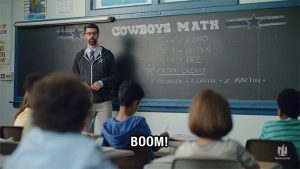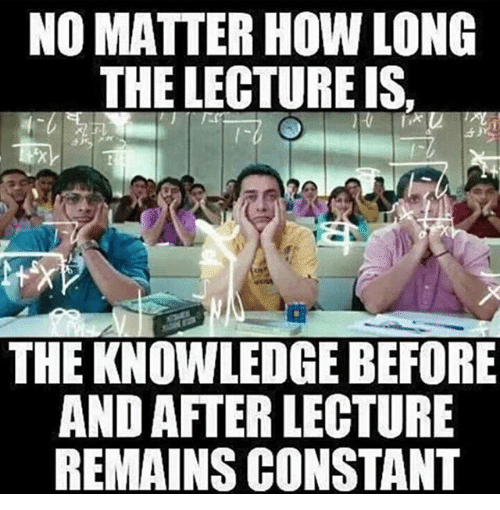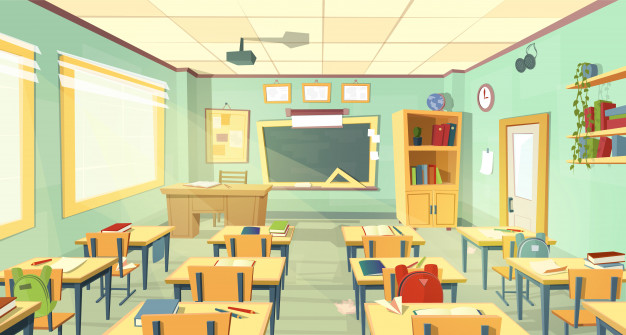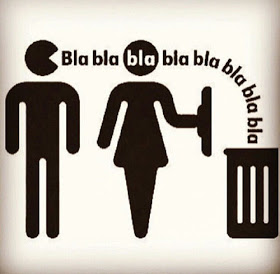Paulo Freire is against the education system which he classifies as the “banking concept of education.” He supports the idea that education should be a more collaboratively where students and teachers work together, instead of the teacher giving lectures and students just recording it. This is more like the teachers just filling up students’ mind with any pieces of information and students have to accept it without questioning it, which is not good for students’ growth. This empowers the teachers, give them authority, and disempower students as it limits them from challenging themselves, asking questions, and think creatively. In my first year of college, I had a professor who would give lectures by reading the textbooks. If you had any questions, he would tell you to read the textbook, it will answer all your questions. Therefore, as a student, it was very difficult to learn because textbooks don’t always provide the explanations you need. Connecting back to Friere’s theory, since there was no collaboration and interactions between the professor and students, it was hard for me to learn anything in this class. I had to use outside sources such as youtube videos and google to learn things, and it felt like an online class. I do agree with Friere’s point, it is important to have interaction between the educator and students in order for students to grow, learn, and think critically.
Tag: Blog Post 3: Pedagogy and Power
Blog Post 3: Pedagogy and Power,
Palo Fiere was born in Brazil in 1921. As a child he lived a life of poverty. however he managed to get into school and get multiple degrees. He ended up teaching Portuguese and studied law as well. In 1946 he was the director of the department of education and social services. Education and the way it was implemented was very important to Fiere.
The banking Model to Fiere was a form of teaching in education. In this form the teacher/ professor stands at the front of the room and is the only one allowed to speak, while all the students silently listen to what the professor has to say. The professor has all the power in this scenario because it is implied that the teacher has all the ” wisdom” while the students have nothing of value to contribute too the class. Fiere believed strongly in the banking model because of of his work in education led him to believe strongly in the ” traditional” model of education. The banking model puts students involved in it at a huge disadvantage. Some people don’t learn my being a sponge and just soaking up what someone else has to say. Some learning needs to be interactive. Furthermore the professor may not know everything in the world and at times may need to be corrected as well.
I have A lot of experience with the banking model, as most of my education has been attained through this model. every since first grade all the way to being a senior in high school, a teacher would tell us all we should know to pass a class or a test. I am relatively well acquainted with the model from young. so learning in the banking model wasn’t a challenge. I do appreciate my teachers giving me the knowledge they had to share with me. However, there were some circumstances in which I know that an interactive classroom would’ve helped me learn better. unfortunately that opportunity was rarely available.
Blog Post #3: Pedagogy and Power
The banking model to Freire is about the education system. It showcases how students are taught to sit down and listen to the teacher while the teacher does all the talking. Then students are empty vessels and waiting for knowledge to be poured into them. The teacher is the one with all the knowledge. This type of system empowers the teachers and certain students who learn like that while disempowering a bunch of other students who don’t learn in environments like that. I have personal experience with this model because I grew up in the American school system and a lot of teachers like to run their classes in this format. Some teachers like the class to discuss topics together while other teachers just want to talk at students rather than talk to or with them. I have talked to my classmates and when they aren’t really engaged in the class and they’re just trying to take notes they are not actually retaining the information they should be retaining. The banking model is flawed in that aspect.
Blog post 3: Pedagogy and power
Paulo Frier was a Brazilian educator who brought this concept to many people of Critical pedagogy. He introduced the system in which teachers spoke and deposited information into the students which should then be spit right back out making them into basically robots. This proposal was brought in during a failing education system in the region. The system he introduced and popularized was giving the teachers all the power to push whatever information they wanted to in their students brains and forced them to memorize and repeat whatever they were teaching, not giving the students the time to process the information and say how they think or give their own opinions and questions on it. The process would not let the students thrive in their own ways and would put them all apart of a system that doesn’t let the students have their own way of thinking.
My experience of this system from teachers i’ve had been at a minimal. In a way teachers i have had pushed information at times throughout my years of schooling but we were encouraged to have open discussions about our thoughts on many topics so we were able to process all the information and give our take on it. This system has overall been away from how teachers have taught me over the years. Learning the way i have helped me become independent in my thoughts and ways of processing information and being able to question the information i had curiosity about.
Banking Model
Friere proposed the banking model to address the current flawed educational system, where teachers “deposit” information to the students. According to Friere, the system harms children by hindering their intellectual growth and liberating their unique ideas and concepts. In this teaching system, teachers act as depositors and students as receptors, making the humans into mechanical objects. This prevents both the depositors’ and receptors’ autonomy and in the long run the ability to think critically, rationalize and conceptualize information at a personal level. This type of teaching method empowers the teachers, as they control the passive learning experience at the expense of the the students and the teachers. The teaching method leads to a demise of the teachers’ and students’ true consciousness. It asserts and promotes a system of oppression and control.
My learning experiences have been through this banking model system from the time I can remember. However, there are gradual changes in this system, and I can see teachers who want to promote open discussions and allow students to dictate a portion of the learning process. That being said, there needs to be more changes in our educational system. I had a class where the teacher came in and started lecturing. There was no space to ask questions or to have discussion about the topic. Though it was a hard class, it was even more dreadful because I was not able to conceptualize the information provided. The positive to this was that I had to develop my own scheme to learn the information on my own. It helped me to be independent and better understand my learning style since I was not getting the support I needed from my teacher.
Pedagogy and Power
Paulo Freire uses the term Banking Model to criticize the traditional way of teaching and education. He describes it as teachers simply passing on an idea to the students. The teachers talk and lecture while the students are quiet and receive the information. He referred to the students as “containers” that teachers put knowledge into. It empowers the teachers at the students expense. It shows that the teacher is the one more experienced and has all the knowledge on this topic regardless of whether the student knows anything about it.
I have experienced this type of model many times in high school. Some teachers I had would not care to listen to anything the students had to say. They would think everything that they said was correct. I think this model has more negative aspects rather than positive. You might be able to learn something but it’s not the most effective and long term method of teaching.
Pedagogy and Power
Fiere talks about the “banking” method of learning. Every relationship has two parties and in this relationship one party is a narrating Subject (the teacher) and the other is a patient listening object (the student). This is a one way relationship, the students put nothing towards it. It turns the student into a box or container waiting to be filled. The more completely the teacher fills the “container”, the better a teachers he/she is. The more meekly the students allow themselves to be filled, the better students they are.
I don’t agree with this concept of teaching. It is implying that students don’t know anything and can’t input into the lesson and that teachers know all the knowledge and have the correct pieces of informations. I believe, at different ages, students have differents ideas that they can share, and smarts that teachers can learn. When I was younger, my mom (who is a teacher) always said, “Teaching is learning.” She would come home from work and tell me stories of things her students did, and what she learned from them.
I thing to get the utmost knowledge into students is to teach them using a more ‘friendly’ method of teaching.
Blog 3 – Pedagogy and Power
To Friere, the “banking model” is a form of teaching in which the teacher or educator, feeds knowledge to the student, and the student only receives knowledge. It is a one way relationship that empowers the teacher, disempowers the student, and prevents critical and creative thinking. Despite giving the educator the upper hand, this banking model is detrimental to both the student and the teacher. The student suffers because they are simply taking in information that will be useful for them on their exam, and aren’t necessarily retaining that information for the future. The educator suffers because they are simply talking and ensuring everyone comprehends, which leads them to dislike their jobs. Friere argues that there needs to a balance between the teacher teaching the students, and the students interacting with the teacher. I have had many experiences in grade school and in college with the banking model. Specifically in my first semester of college, I had a professor that would speak for an hour and fifteen minutes, ask questions to see if we understood, and continue speaking. This experience supports Friere’s “banking model” theory because since there was no interaction and all lecture, I learned very little in the class and it was obvious the professor wasn’t enjoying the experience too well either
Pedagogy and Power: Freire’s Banking Model
The banking model of education is Paulo Freire’s take on the version of education in which teachers play the role of a “narrator” that simply “deposit” information to their students who are their information “containers.” To Friere, this type of education is damaging to students since they become conditioned to listen, memorize, and repeat everything they’re being taught instead of truly grasping the concepts behind the topics that are being taught. The students also often end up not having the right kind of experience when it comes to the so-called “real world” after graduating.This form of education empowers teachers, as they are the ones in positions of authority, sharing the knowledge, and disciplining, whereas the students are the ones complying with sitting back, taking in the information, and being disciplined. This happens at the expense of the masses and society as a whole due to people’s lack of interest in asking questions and sharing their opinions since they have become so used to a certain method of only taking in the information that seems necessary.
In today’s education system, I think experiences with this model are inevitable. With the push for standardized exams and “Common Core” in elementary, middle, and high schools students are becoming more and more inclined to just take in information that is being provided to them without bringing up any questions. Much through my years as a student, especially in science and history classes, I felt as if I couldn’t do much but memorize certain things to actually pass a class. I could tell you that “the mitochondria is the powerhouse of the cell” but ask me if I actually understand what the means and I wouldn’t have a clue. The constant need for memorization led me further away from the actual information and more towards Robot-That Must Pass The Class. To me, this is one of the main reasons why I (and other students) become disinterested in topics that could have actually been interesting.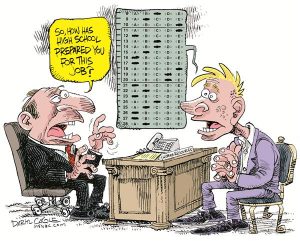
Pedagogy and Power
According to Paulo Freire, the banking model of education can be thought of as students being empty vessels or containers in which teachers/educators must put new knowledge into those “containers” or students. Essentially, the teachers are expected to unload information into student’s brains, and it is then assumed that those said students will intake that information, memorize it, and then be able to regurgitate it. This is how Paulo Freire metaphorizes the education system. This model can be seen to empower the educators or teachers because in this sense, they have the ability to give forth any information that will fill the student’s mind or their empty container. Thus this model can be seen to disempower the student’s since they are not in control of the information that they are being filled with and expected to memorize.
I believe that throughout my academic career, I have experienced this model multiple times in which it had its positives and negatives. For me, one experience of the banking model that I encountered was when I first began to learn Spanish in middle school. In the beginning, for every class the teacher would give us new words to learn the meaning behind and then the different endings. For example, I would be taught that “descansar” meant to rest, and then be given a list of the different conjugations. During this time I was expected to have this information “deposited”, memorize it, and the recite it. I believe that for this kind of course, this model was an advantage because it is important to be able to memorize a word’s meaning as well as its conjugations, and repeat this information…just as one would with a word in English. Although, I think a negative of this learning was that I was never encouraged to memorize proper use or using it in a sentence. There was no critical thinking to the basics of this course, and therefore I personally had a difficult time learning the material. From this personal difficulty, my Mom would have to speak to me in Spanish and use the word in order for me to fully understand the word, and then I would have to create my own sentences; I was not always able to just memorize it and regurgitate it. 